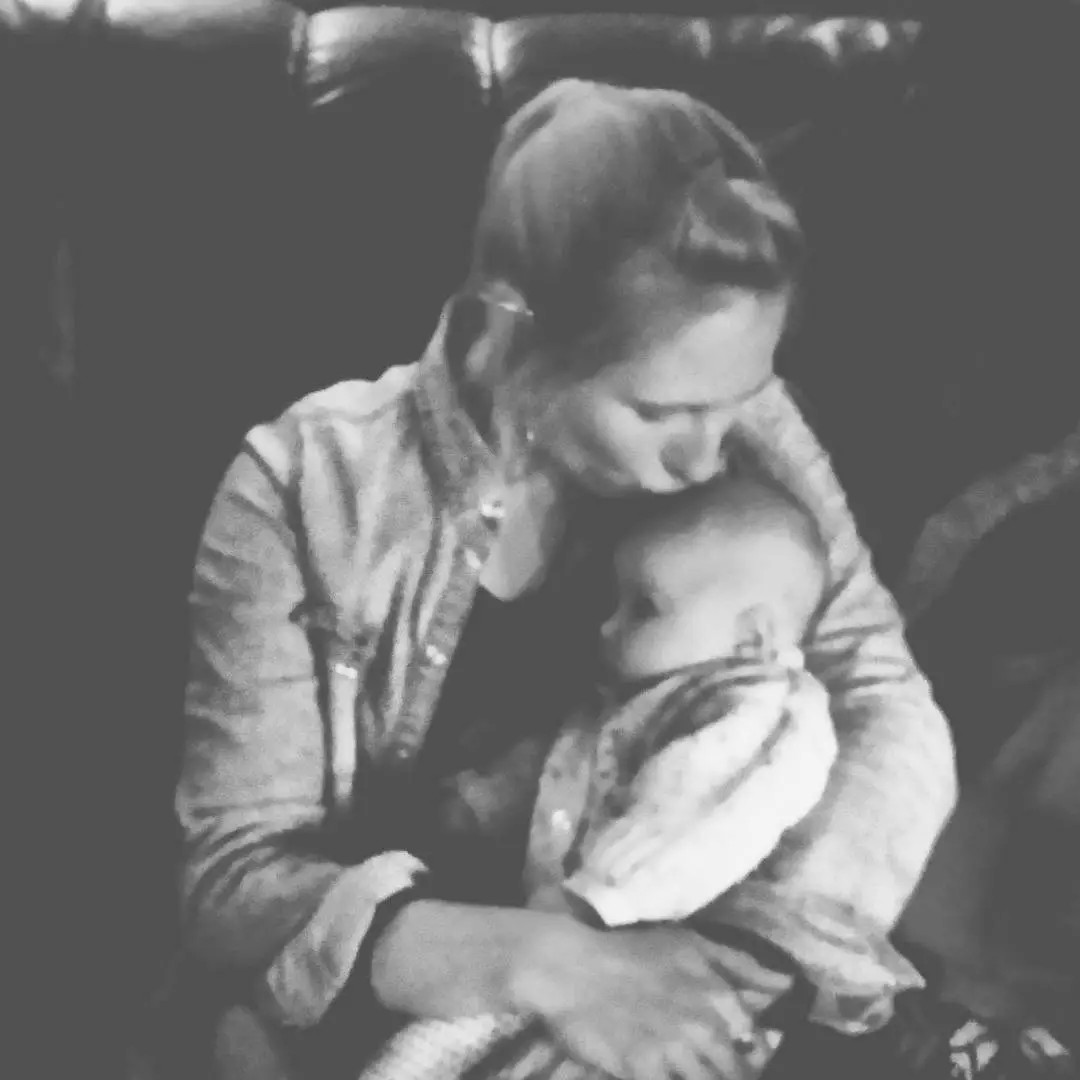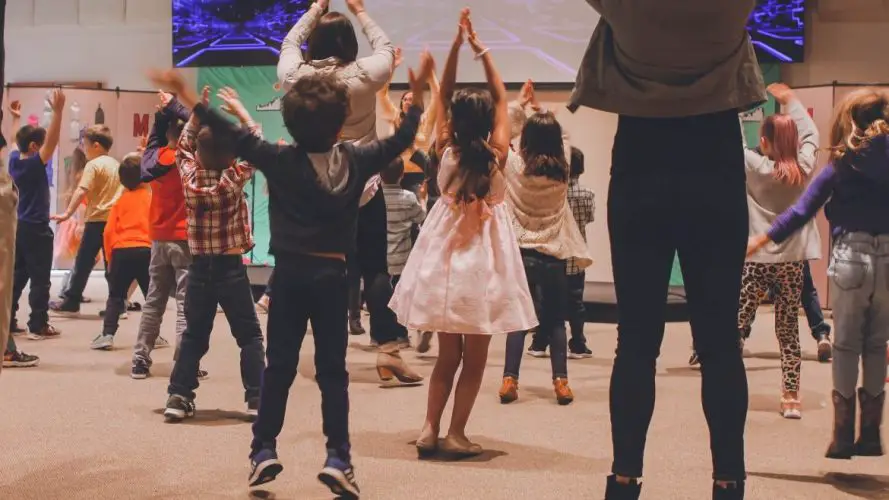From improved agility to a stronger heart, lungs, and musculature, the list of physical benefits of dance is a long one; but, what about its other positive impacts?
Dance and creative movement are naturally attractive to kids, giving them an opportunity to use their boundless energy and find new means of self expression. Science has linked dance with numerous cognitive, academic, and social benefits for kids, so the time they spend dancing in school, as a hobby or extracurricular, and even recreationally contributes to their well-being (in addition to offering up a great workout).
Let’s take a closer look.
The infographic

Examining the evidence
This collection of 11 studies connects dance and creative movement with cognitive, social, psychological, and academic benefits which may positively impact child development.
1) Increases self-discipline
Whether it’s making healthy lifestyle choices, putting in the practice necessary to succeed at a hobby, or finishing chores before recreational time begins, the use of self-discipline is an important skill that’s best developed through practice. Hobbies and activities at which children can improve through practice are often associated with self-discipline, as those demonstrable improvements boost self-esteem and encourage them to keep going.
As it is often associated with regular practice and coaching, dance is one such hobby. In an assessment of teen and young adult females regularly attending dance classes, 92% reported that their participation in the classes had helped to improve their self-discipline.
Key study/paper: Uvnäs-Moberg, K., Handlin, L., & Petersson, M. (2015). “Self-soothing behaviors with particular reference to oxytocin release induced by non-noxious sensory stimulation.” American Educational Research Journal, 32(4)
Source: ncbi.nlm.nih.gov/pmc/articles/PMC4290532
2) Relieves anxiety
While occasional anxieties are a normal part of life, feeling anxious can be especially tough on kids, who are still learning to cope with complex feelings. Providing a listening ear and earnest emotional support can go a long way, but when anxieties are vague, sometimes grounding techniques and other proven anxiety-relieving activities like exercise are a good way to go.
As physical movement has often been scientifically linked to a reduction in anxiety symptoms, it’s not surprising that dance, which provides great cardiovascular exercise, has a similar effect. A review of 14 controlled studies on recreational dance activities among child and young adult populations revealed that participation in dance has the potential to alleviate anxiety and improve psychosocial well-being.
Key study/paper: Burkhardt, Jan, and Cathy Brennan. “The effects of recreational dance interventions on the health and well-being of children and young people: A systematic review.” Arts & Health 4.2 (2012): 148-161.
Source: tandfonline.com/doi/abs/10.1080…
3) Leads to better attendance
The more of their prescribed time kids spend in class, the better; it’s where they have the most direct access to their teachers for help with material, and it’s also an important part of their access to peers for social development. Attendance issues are often a sign that a child or teen is stressed out or otherwise at-risk, so it’s common for schools to follow up if they suspect something other than illness is the culprit for frequent no-shows.
Classes and extracurriculars that students find fun and engaging are often linked with higher levels of participation, and there’s reason to believe that participating in a dance program within a curriculum or as an extracurricular activity can improve student attendance. Among a large, ethnically diverse group of students whose academic and extracurricular behaviors were tracked from preschool to eighth grade, dance participation in middle school was correlated with better attendance overall.
Key study/paper: Gara, Taylor V., and Adam Winsler. “Selection into, and academic benefits from, middle school dance elective courses among urban youth.”Psychology of Aesthetics, Creativity, and the Arts (2019).
Source: psycnet.apa.org/record/2019-19127-001
4) Provides an outlet for feelings
Self-expression is an important part of processing and coping with feelings, both positive and negative, but it’s something with which children sometimes need guidance. Learning to cope with big feelings like disappointment, frustration, grief, or even positive feelings like excitement and joy, can sometimes lead to acting out in ways that are unproductive.
Redirecting feelings into physical and/or artistic self-expression is an effective strategy for kids and adults, and science has linked dance with providing an outlet for the expression of feelings. When a group of teen and young adult women who regularly participated in dance classes were interviewed about their experiences with dance education, 88% revealed that dancing helped them to express their feelings.
Key study/paper: Vicario, Terra, and Catherine Chambliss. “The Benefits Associated with Dance Education for Adolescent Girls.” (2001).
Source: eric.ed.gov/?id=ED448404
5) Improves behavior in young children
The wild-child behavior associated with toddlers and preschoolers serves some degree of evolutionary purpose — it’s part of how they test and set boundaries and express their feelings. Of course, it’s up to parents (and teachers) to guide their behavior and ultimately teach them healthier ways to express themselves.
Participation in guided physical activities with other children, like dance and creative movement, has been linked with helping to improve behavior in preschoolers. After an eight week instructional program focused on dance and creative movement, notable improvements in behavior were seen in a group of participating preschoolers when compared to a non-participant control group.
Key study/paper: Lobo, Yovanka B., and Adam Winsler. “The effects of a creative dance and movement program on the social competence of head start preschoolers.”Social development 15.3 (2006): 501-519.
Source: onlinelibrary.wiley.com/doi/abs/10.1111
6) Raises grade point average
Hitting the books, doing their homework, and participating in class are all ways that kids can work on raising their all-important grade point average, or GPA. The two-digit score determines where they rank among their classmates, and it’s something that will be considered by the colleges and universities they ultimately apply to.
Though frequent studying and good academic habits are most commonly linked to GPA improvement, research has demonstrated that other factors may help to raise the score. Among a large, ethnically diverse group of students whose academic and extracurricular behaviors were tracked from preschool to eighth grade, those who participated in dance education during middle school had higher grade point averages.
Key study/paper: Gara, Taylor V., and Adam Winsler. “Selection into, and academic benefits from, middle school dance elective courses among urban youth.”Psychology of Aesthetics, Creativity, and the Arts (2019).
Source: psycnet.apa.org/record/2019-19127…
7) Facilitates cognitive development
Children achieve cognitive development as they think, learn, and explore; they gain new knowledge and skills, improve their ability to solve problems, and gain a better understanding of their world. Kids tend to naturally gravitate toward games and activities that encourage this kind of exploration, but guided activities are also correlated with cognitive development.
Dance can have many applications in childhood learning, one of which is dance motor therapy, defined as the psychotherapeutic use of movement to promote emotional, social, cognitive, and physical integration of the individual. A meta-analysis of studies and research on dance motor therapy have identified participation in dance within curriculum as a facilitator for cognitive development in children.
Key study/paper: Balgaonkar, Asmita Vilas. “Effect of dance/motor therapy on the cognitive development of children.” International journal of Arts and Sciences 3.11 (2010): 54-72.
Source: citeseerx.ist.psu.edu/viewdoc
8) Boosts standardized test scores
Love them or hate them, standardized tests exist for an important reason. They’re used to measure the efficacy of a school’s curriculum when compared to that of other schools, both nationally and internationally, and are used to hold schools and teachers accountable for successfully conveying age and course-appropriate knowledge. Standardized test results can also help teachers, parents, and students to identify a subject in which a student may need extra help.
Though good teachers and attentive class participation are both major contributors to good standardized test scores, some extracurricular and non-traditional courses are also associated with score boosts. Among a large, ethnically diverse group of students whose academic and extracurricular behaviors were tracked from preschool to eighth grade, standardized test scores were higher among those who participated in dance education during middle school.
Key study/paper: Gara, Taylor V., and Adam Winsler. “Selection into, and academic benefits from, middle school dance elective courses among urban youth. Psychology of Aesthetics, Creativity, and the Arts (2019).
Source: psycnet.apa.org/record/2019-19127-001
9) Enhances social competence
Building healthy social relationships with peers is an important part of childhood, but it doesn’t begin in earnest until young children start to learn social competence. This includes playing with others in a cooperative and communicative way, sharing, taking turns, and treating others with respect.
The best way for young children to improve their social competence is engagement with kids their own age, whether at play groups, recreational activities, or at school. As one study revealed, after an eight week instructional program focused on dance and creative movement, significant enhancements to social competence were seen in participating preschoolers when compared to a non-participant control group.
Key study/paper: Lorenzo-Lasa, Riolama, Roger I. Ideishi, and Siobhan K. Ideishi. “Facilitating preschool learning and movement through dance.”Early Childhood Education Journal 35.1
Source: springer.com/article/10.1007/s10643…
10) Offers opportunities for cultural learning
Learning about other cultures during childhood has the capacity to broaden horizons and open young minds. When kids recognize the nature and value of global diversity at a young age, they’re better able to understand and empathize with peers from other parts of the world, who may have different traditions and beliefs.
As a reflection of culture, the arts are replete with opportunities for cultural learning. Dance has a unique form and place in almost every culture, but is, on the whole, embraced globally as a form of self and cultural expression. A meta-analysis on the potential role of dance and creative movement in child development reveals that dance facilitates the potential for rich cultural learning experiences and opportunities to better understand the world.
Key study/paper: Owens, G., Granader, Y., Humphrey, A. et al. (2008) “LEGO® Therapy and the Social Use of Language Programme: An Evaluation of Two Social Skills Interventions for Children with High Functioning Autism and Asperger Syndrome” J Autism Dev Disord 38, 1944
Source: link.springer.com/article/10.1007/s10803-008-0590-6
11) Prevents problem behaviour in school
When children are acting out in class, it’s almost always indicative of an underlying problem. Whether the issue is academic stress, problems at home, mental illness, social struggles, or something else, offering support and guidance over immediate punishment is key in putting an end to the problem behavior.
For many at-risk students, finding a hobby or extracurricular that boosts their self-esteem and makes them feel fulfilled and acknowledged can also slow or stop negative classroom behaviors. Among a large, ethnically diverse group of students whose academic and extracurricular behaviors were tracked from preschool to eighth grade, a lower likelihood of suspension was observed in those who participated in dance education during middle school.
Key study/paper: Gara, Taylor V., and Adam Winsler. “Selection into, and academic benefits from, middle school dance elective courses among urban youth.” Psychology of Aesthetics, Creativity, and the Arts (2019).
Source: psycnet.apa.org/record/2019-19127
Wrapping up
It’s quite clear that the benefits of dance range far beyond the physical. Young children have the potential to improve their behavior and social skills, while older children and teens can see improvements to academic outcomes and greater self-discipline.
Relief from anxiety, a means of self-expression, and opportunities to learn about other cultures are benefits of dance for participants of all ages. A correlation in these studies between group participation in dance and beneficial outcomes makes an important case for the positive role dance can play as a regular part of physical education curriculum.





